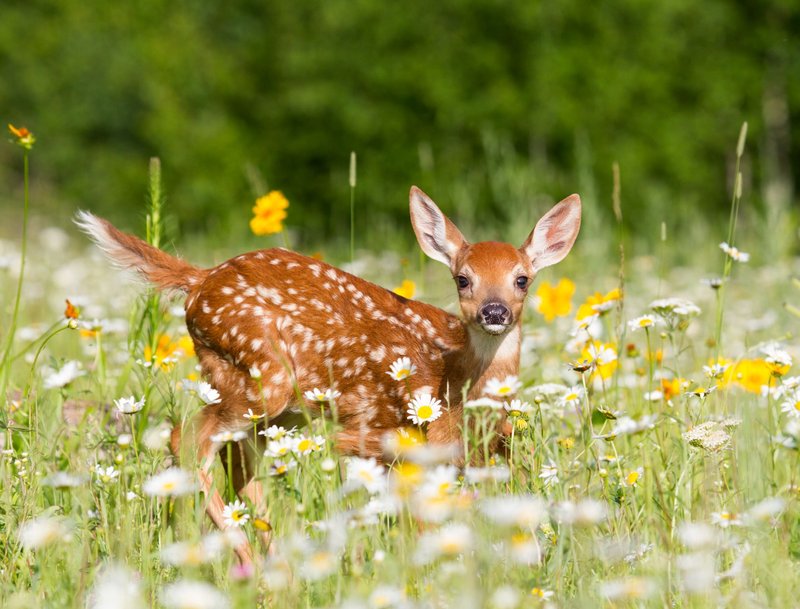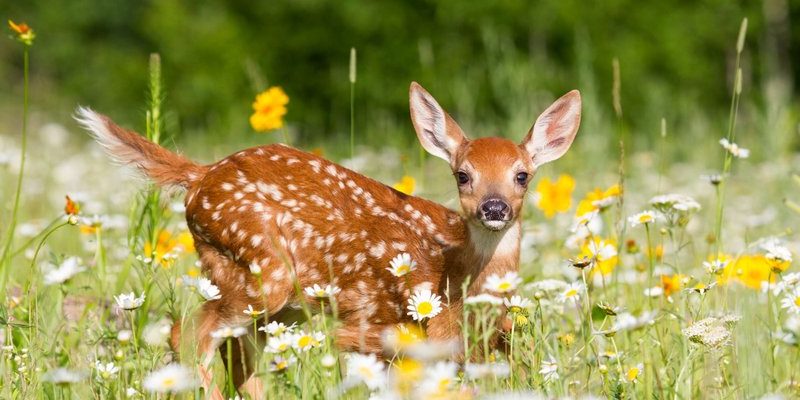
Let’s take a moment to jump into the world of white-tailed deer, exploring the common myths we believe about them. You might be surprised to find that some of these misconceptions are as popular as the deer themselves. From their behavior and habits to their habitats and diets, we’re here to set the record straight. Grab your favorite warm drink, and let’s dive into the facts!
Myth 1: White-Tailed Deer Are Completely Color Blind
You might have heard that deer see the world in shades of gray, and it’s easy to think they’re totally color blind. Here’s the thing: while they don’t see colors the way humans do, they aren’t completely devoid of color vision. They have dichromatic vision, which means they can see some colors but not all.
Imagine watching your favorite movie in black and white instead of color. You would still get the plot, but the details would be lost. That’s a bit like what white-tailed deer experience. They can see blue and yellow hues but struggle with reds and greens, which might appear as shades of gray. So, if you’re planning to wear that bright red hunting jacket, maybe reconsider.
This understanding of their vision helps explain why they can quickly pick up movement. Their eyes have adapted to detect motion, which is crucial for avoiding predators in the wild.
Myth 2: Deer Are Just Bouncing Beasts
Another common myth is that white-tailed deer are merely “bouncing beasts,” hopping around in a carefree way. While they are indeed known for their impressive leaps, there’s a lot more to their movement. Picture a tightrope walker—every step is calculated, planned, and purposeful.
White-tailed deer are incredibly agile and can jump over obstacles like fences with ease, reaching heights of up to 10 feet! But they don’t just leap because it looks fancy; they’re running from threats or navigating through their environment. Their movements are often strategic, blending speed and agility to help them evade predators. So, the next time you see one leap, think about the instinct driving that jump.
Understanding their behavior makes us appreciate how they interact with their surroundings and the challenges of surviving in the wild.
Myth 3: White-Tailed Deer Only Eat Grass
It’s easy to picture a deer nibbling on lush green grass, but they’re much more versatile in their diet. Think of a buffet where you can enjoy a variety of dishes. White-tailed deer have a diverse menu that includes not only grass but also leaves, fruits, nuts, and even bark!
In the winter, when food is scarce, they might munch on twigs and tree bark to stay nourished. Their ability to adapt to different food sources plays a huge role in how they thrive in various habitats. This flexibility allows them to survive throughout the year, no matter what Mother Nature throws at them.
So, if you see a deer near an apple tree, know they’re probably more interested in that sweet snack than the grassy patch nearby. Their foraging habits tell a bigger story about their adaptability and survival skills.
Myth 4: Male Deer Have Antlers Year-Round
If you’ve ever seen a majestic buck with impressive antlers, you might assume they wear them all year long. But here’s a surprise: male white-tailed deer, or bucks, actually shed their antlers every year! It’s like getting a fresh haircut, signaling new growth and development.
Antlers grow in the spring and summer, fueled by a special hormone that helps them develop quickly. Come winter, they’ll shed those antlers, often during rutting season when males are vying for dominance. New antlers will begin to grow again in spring, starting the cycle all over.
This fascinating process allows bucks to display their health and fitness levels, which plays a crucial role in their mating success. Next time you spot a buck with impressive antlers, remember the journey those antlers have taken throughout the seasons.
Myth 5: White-Tailed Deer Are Dangerous to Humans
There’s a common belief that white-tailed deer are aggressive and dangerous to humans. While they are wild animals, aggressive behavior is less common than you might think. Just like a shy person at a party, deer are more likely to avoid confrontation than seek it out.
In fact, most encounters with deer end with them running away at high speed. They typically prefer to keep their distance. That being said, they do become more aggressive during mating season or when they feel cornered or threatened. It’s important to remember that like any animal, they should be respected and observed from a distance.
Understanding their behavior helps us appreciate their role in the ecosystem while also guiding us to act wisely if we happen to cross paths with one.
Myth 6: White-Tailed Deer Only Live in Forests
While forests are a common home for white-tailed deer, they’re not limited to wooded areas. Think of them like city dwellers who can adapt to suburban life. Deer can thrive in various environments, from open fields and grasslands to urban areas.
As human populations expand, many deer have found new homes alongside us. They adapt well to fragmented landscapes, where they can find food and shelter in backyards, parks, and even residential neighborhoods. This adaptability is part of what allows their population to remain robust across North America.
Seeing deer in unexpected places is a reminder of their resilience and ability to navigate changing habitats. It’s fascinating how these creatures can coexist with humans while remaining largely wild.
Myth 7: White-Tailed Deer Are All the Same Size
You might think all white-tailed deer are pretty much the same size, but that’s far from true. Like comparing different dog breeds, there’s a lot of variety in the size and weight of these deer. Factors like age, genetics, and habitat can all influence size.
In general, males (bucks) can weigh between 150 to 300 pounds, while females (does) tend to be smaller, often ranging from 100 to 200 pounds. Interestingly, deer in northern regions tend to be larger due to the need for extra body mass to survive colder temperatures.
So, when you spot a deer in the wild, take a moment to appreciate the unique characteristics that make each one special. Their diverse sizes are just one of the many wonders of nature.
Final Thoughts on White-Tailed Deer Myths
It’s easy to get tangled up in myths and misconceptions about white-tailed deer, given how often we encounter them. Understanding the truth behind what we think we know can enrich our appreciation for these animals. When you clear away the myths, you can see them for the incredible creatures they are—adaptable, resilient, and beautifully complex.
Next time you’re out in nature, take a moment to observe the white-tailed deer around you. You’ll not only see them through a new lens but also appreciate their role in the ecosystem. Let’s keep these myths in check and celebrate the truth about one of nature’s most fascinating animals!

